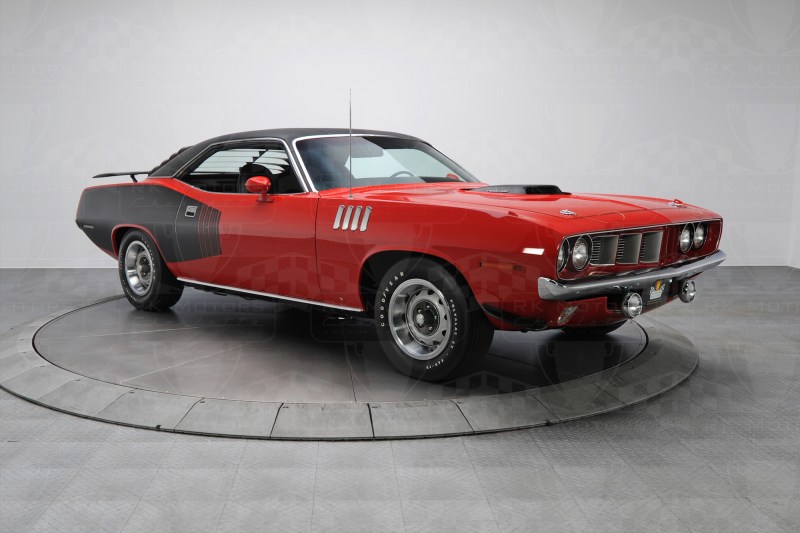While Dodge, Ford, and Chevrolet carry the American muscle car torch forward with new versions of their iconic coupes, automotive enthusiasts can’t help but miss the long-lost car brands that once brought us symbols of power.
Among the front-engine, rear-wheel drive monsters of the 1960s and ‘70s, Plymouth’s Barracuda reigned supreme. In particular, the third generation, which shared its platform with the Dodge Challenger, created a cult following that has only grown over the years. In fact, the Hemi Cuda is the most valuable muscle car of all time.
These days, finding a ‘Cuda in good condition is like finding a pot of gold, but RK Motors has followed the rainbow to its conclusion so you don’t have to. This Rallye Red 1971 example has just 2,010 original miles on its 426 HEMI V8 engine. Everything about this stunning muscle car is original, including its Torqueflite three-speed transmission, dual-exhaust, Dana 60 rear end, Sure Grip differential, Rallye wheels, and Hemi suspension.
This ‘Cuda was owned by Zachary Taylor Reynolds, heir to RJ Reynold’s Tobacco fortune. RK Motors has an incredible write-up on the wild life of “Dr. Zach” Reynolds, but we’ll give you the short version. Zach dressed like a prince, surrounded himself with celebrities, and risked his life on a constant basis. After countless accidents via bikes, planes, and cars, Reynolds retired from daredevil maneuvers to collect cars and motorcycles – the ’71 Cuda became his centerpiece.
This is the lowest-mileage, highest-optioned Hemi Cuda on the planet, so you’ll need $1.29 million to take it for a spin. Sure, you could shop pretty much any supercar on the market for that kind of cash, but nothing will turn heads like this outrageous muscle car. Do us a favor, though – if you make this beauty your own, give us a ride. Please?








